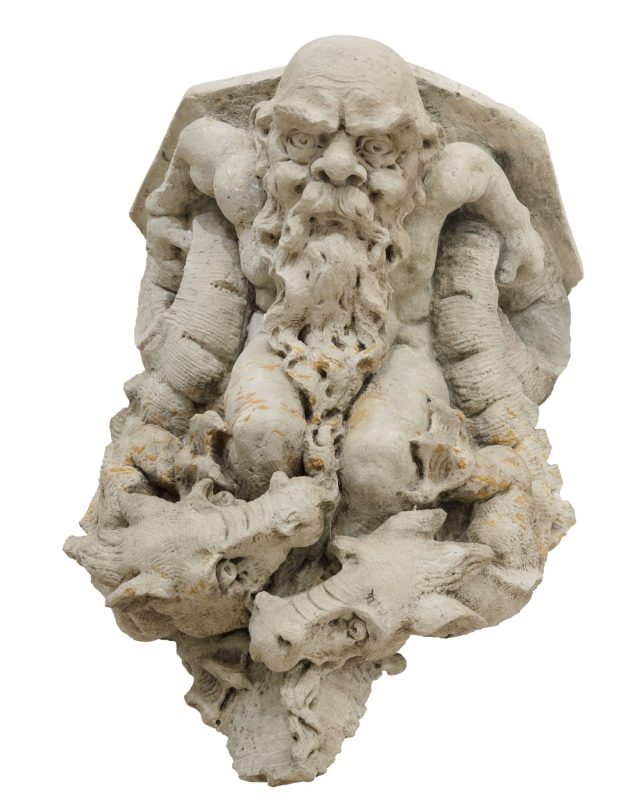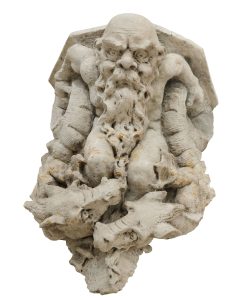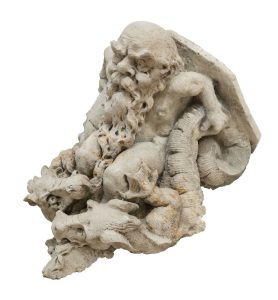- Time
- Dresden, around 1720
- Material
- sandstone
- Height
- 27½ in
The lavish sculptural decoration of the Dresden Zwinger is one of the highlights of Baroque sculpture. It was created from 1711 onwards by a team of gifted court sculptors under the direction of the famous Balthasar Permoser.
Permoser, born in 1651 in Traunstein in Upper Bavaria (then Salzburg), moved to Vienna around 1670 after training as a sculptor in Salzburg. Five years later, he worked as an apprentice to Giovanni Battista Foggini in Florence. From 1689, Permoser served the Prince-Elector of Saxony Johann Georg III and later his son and successor Augustus the Strong as court sculptor in Dresden.
The Zwinger, a palace complex in the form of a pleasure garden surrounded by numerous pavilions, initially functioned as an orangery and festival area and from 1728 also housed the Electoral and Royal Chamber of Art and Curiosities. The lavish sculptural decoration of the buildings and gardens with atlases, entablature-, corbel- and fountain figures as well as free-standing statues is an essential part of this palace-turned-work of art. To fulfill this gigantic commission, Balthasar Permoser appointed well-known sculptors such as Paul Heermann, Johann Benjamin Thomae, Johann Joachim Kretzschmar, Johann Christian Kirchner and Johann Matthäus Oberschall – all court sculptors. It was in this art-historical environment in Dresden – a city overflowing with creative potential – that the console figure shown here was probably created.
This outstanding, charming sandstone sculpture of a male mythological figure with two dragons clearly refers to the works of the Zwinger masters in its physiognomy with a broad nose, protruding forehead bulge, deep facial wrinkles, dynamically shaped beard hair in corkscrew curls and stocky body shape. There are particular similarities to Paul Heermann’s Hermen of the Wall Pavilion and Johann Benjamin Thomae’s Triton of the Nymph Baths.
The strong, bearded figure seems to be effortlessly holding the two writhing dragons in check with just one hand each. It gives the impression of an apotropaic figure – a sculpture that was supposed to protect the house and property with its unbridled power. This wonderful sculpture from the circle of the great Balthasar Permoser – testimony to one of the most important phases of German sculpture – still exudes the unique esprit of Baroque Dresden.


